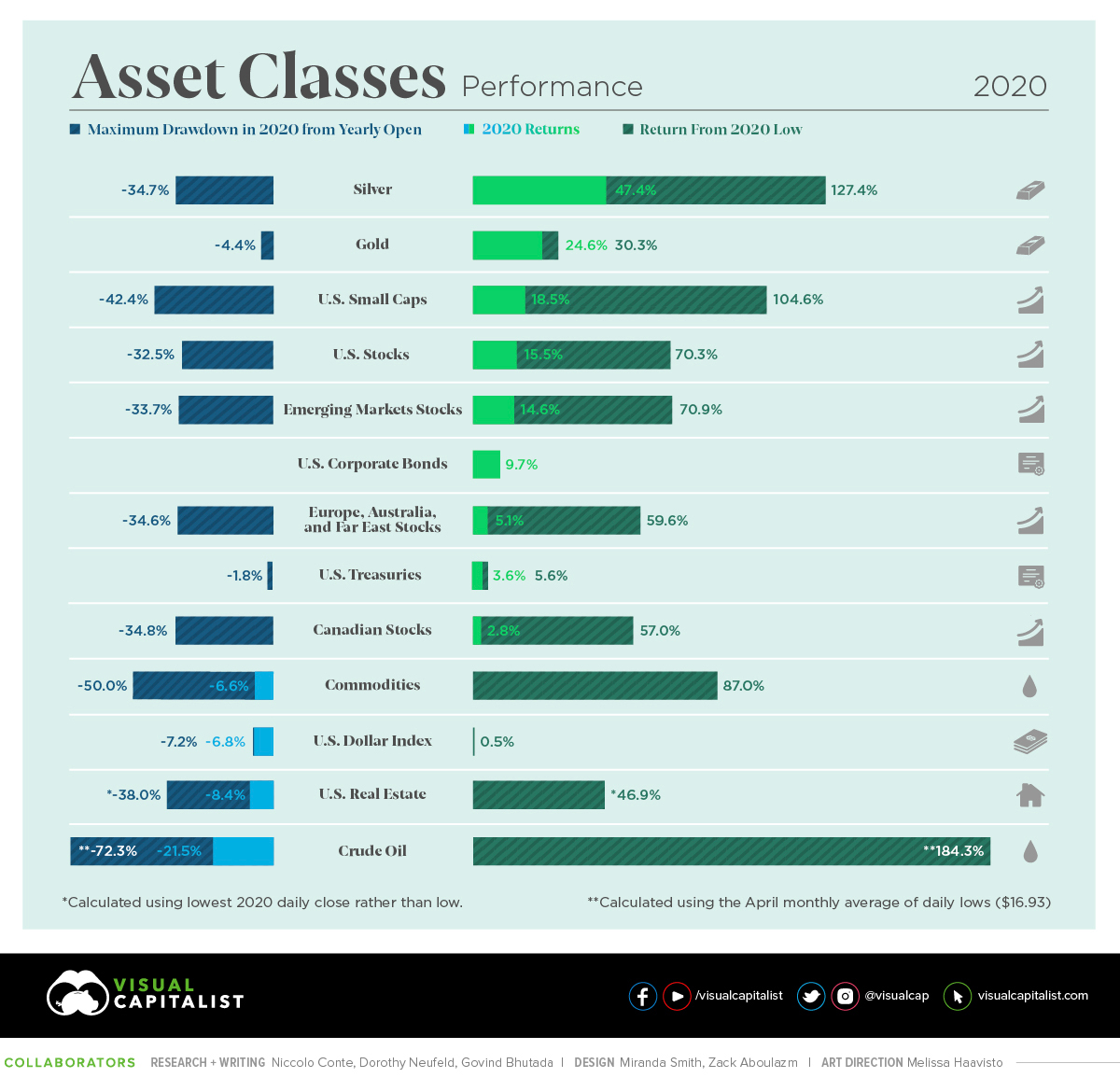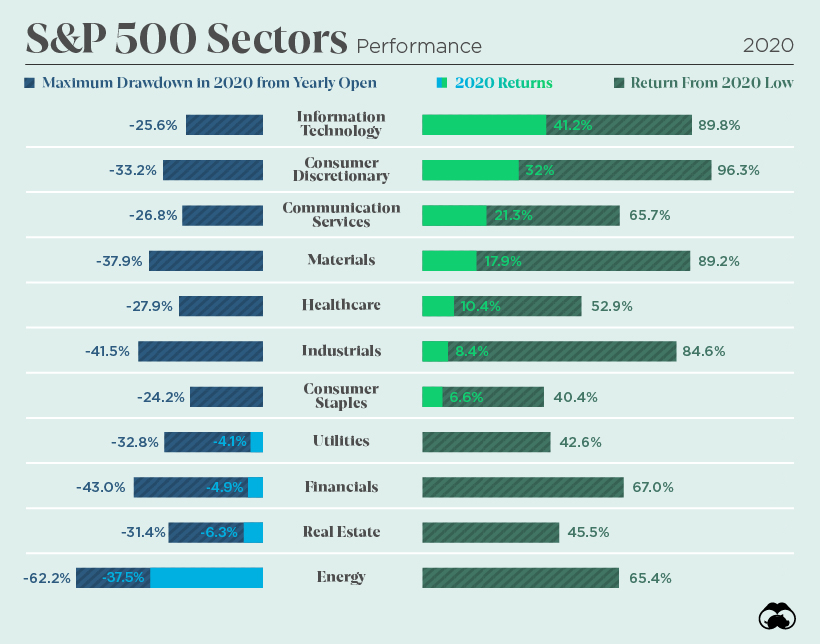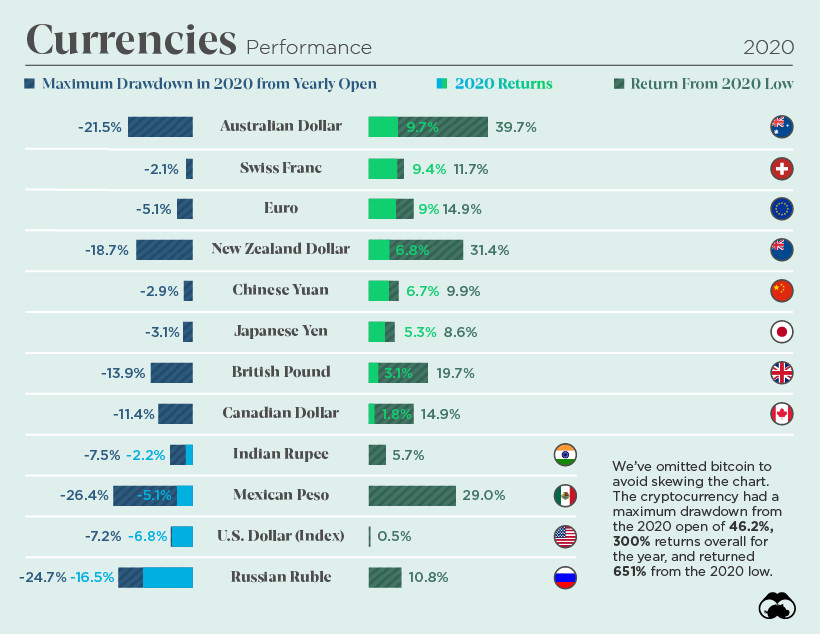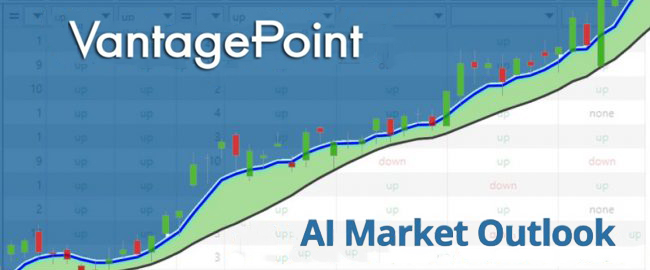Price Discovery and the Brave New World of What is Money?
The primary and central tenet of capitalism is that markets arise to solve problems. While this might appear obvious on the surface, it’s important to think about whenever we observe environments where markets are prohibited from existing or functioning freely. What allows a market to function freely is what economists refer to as the process of price discovery. This is the function where buyers and sellers interact freely to determine the price of a good, product or service.
Equally as important is to ponder what happens when a market is not allowed to operate freely. While this topic can quickly deviate into the arena of politics, the purpose of this article is to explore and appreciate the mysterious process of price discovery which acts as the very heartbeat of free market economies.
In a completely free market environment, price discovery is the practice by which those willing to sell, in conjunction with those wanting to buy, discover a happy medium where an exchange can occur for both parties. When there is a greater desire to buy, then price trends higher, and when a greater desire to sell, then price trends lower. As part and parcel of this process, there are always certain price points that develop where it takes an even larger shift in attitudes to get price to trade beyond.
There is a wonderful story which was often told by Art Cashin, Director of Floor Operations at the NYSE for UBS about this process.
The two main characters of this tale are Charles Lewis Tiffany the founder of Tiffany’s Jewelry Store and John Pierpont Morgan the famed banker and founder of J.P. Morgan.
Mr. Tiffany knew that Mr. Morgan had an intense affinity for diamond stickpins. One day, Tiffany came across an extraordinarily beautiful stickpin. As was the custom of the day, he sent a man around to Morgan’s office with the stickpin elegantly wrapped in a robin’s egg blue gift box with the following note:
“My dear Mr. Morgan. Knowing your exceptional taste in stickpins, I have sent this rare and exquisite piece for your consideration. Due to its rarity, it is priced at $5,000. If you choose to accept it, please send a man to my offices tomorrow with your check for $5,000. If you choose not to accept, you may send your man back with the pin.”
The next day, the Morgan man arrived at Tiffany’s with the same box in new wrapping and a different envelope. In that envelope was a note which read:
“Dear Mr. Tiffany. The pin is truly magnificent. The price of $5,000 may be a bit rich. I have enclosed a check for $4,000. If you choose to accept, send my man back with the box. If not, send back the check and he will leave the box with you.”
Tiffany stared at the check for several minutes. It was indeed a great deal of money. Yet he was sure the pin was worth $5,000. Finally, he said to the man: “You may return the check to Mr. Morgan. My price was firm.”
And so, the man took the check and placed the gift-wrapped box on Tiffany’s desk. Tiffany sat for a minute thinking of the check he had returned. Then he unwrapped the box to remove the stickpin.
When he opened the box he found – not the stickpin – but rather a check from Morgan for $5,000 and a note with a single sentence – “JUST CHECKING THE PRICE.”
This parable illustrates the mysterious process of price movement in a free market.
Price discovery is the process where buyers and sellers determine where a transaction can take place based on supply and demand of the marketplace. This is what all traders and investors must confront to be successful in the financial markets. Whatever interferes in this free flowing process mut be understood as an existential threat to Capitalism and trading. Economists refer to price discovery as the market price signals. What concerns economists and traders the most, is when distortions in price signals occur, because of massive government interventions like we witnessed during the pandemic and economic lockdown of 2020. These price signal distortions are described as a “held down 1” on a calculator or adding machine which interferes in all attempts to calculate a value.
What does this mean for traders as we enter into 2021? The two major distortions which have occurred in the financial markets is that interest rates have been manipulated for the last 20+ years leading the world into the terrain of a negative interest rate environment.
Interest Rates supply the function of the cost of money and determine the risk-free rate of return for traders unwilling to take market risk.
As if this wasn’t precarious enough, several trillions of dollars of stimulus were added to the economy in 2020 to assist those in need during the economic lockdown. Simple question to ponder in this regard is how might this affect the value of currency markets moving forward?
Let’s look at the results in these powerful infographics created by the Visual Capitalist.
Here is the performance of the S&P 500 sectors:
Lastly, here is the performance of all Foreign Currencies for 2020.
I share these graphics with you because they concisely capture the essence of what occurred financially in 2020. As you study these graphics, take a look at the drawdowns in relation to the annual return versus the return from the 2020 low. This is a representation of the volatility that the markets experienced in 2020.
Consider your own returns last year as you ponder these realities.
A couple of very basic commonsense conclusions can be reached when studying what occurred. Among the lowest volatility of all asset classes took place in the U.S. Dollar. What occurred in 2020, and is carrying over into 2021, is that the very definition of “what is money” is evolving in real time right before our very eyes.
Traders must constantly ascertain the condition of the markets Take the most recent news release from the Office of the Comptroller of the Currency (OCC). The OCC released new guidance for banks yesterday that specifically addressed their use of crypto stablecoins, accompanying a banks’ ability to participate in blockchain networks for settlement and payment services.
It’s abundantly clear all banks will use digital currencies in the future. Some of these digital currencies will be central bank digital currencies (CBDC) that are created by nation states. Others will be private currencies that are created by corporations or centralized organizations. And lastly, some of these digital currencies will be decentralized like Bitcoin. You can read more about the exact guidance here: Read news
What does this mean for you as a trader?
Welcome to the Brave New World of “What is Money?” More importantly, this trend will cause volatility in the currency markets to increase as the value of everything is re-evaluated. We are literally re-evaluating how we value and measure change amongst all financial assets.
Here are some of the financial market highlights from 2020 that stuck out to me:
- Record low unemployment pre-pandemic
- The sudden and severe drop in equity prices in March
- Negative Crude Oil prices in April for the first time in history
- Two emergency interest rate cuts to 0% rate environment
- Liquidity crisis in March and April (stocks, gold and bitcoin down sharply)
- Multiple quantitative easing packages that totaled more than $3 trillion
- Rapid recovery in asset prices after government intervention in markets
- Continued fear of high inflation and currency debasement
- Vaccine approval and distribution
- A trend of beginning to price assets in gold, crypto and bitcoin and away from the dollar
The primary problem of economics has always been understanding supply and demand factors of a marketplace. Where I would caution you, is that the analytical tools that were formulated in the 1970’s by technicians are incapable of addressing the macroeconomic challenges associated with negative interest rates and massive stimulus being added to the economy. All markets are trying to evaluate these two primary factors as they seek a level of equilibrium.
Mr. Tiffany and J.P. Morgan never had to consider this many variables when they decided to trade with one another.
What are you using to find and exploit opportunities in this “Brave New World” of “What is Money?”
How has your method served you in the last 12 months?
Are you prepared for the price discovery which will occur in 2021? This volatility is what traders live for.
Everyone wants to return to the pre-lockdown and pre-pandemic days. However, the economic effects of what occurred in 2020 will continue to have major consequences as we move forward. Traders first and foremost are seeking to protect their purchasing power and are seeking to find assets that offer a store of value in comparison to a currency market that has a very high probability of experiencing severe shocks in the next 12 to 18 months.
This is not apocalyptic gloom and doom. All asset classes and values are under the microscope as we re-evaluate how we measure and value assets. Everyone from Joe Sixpack to your most successful institutional trader is asking themselves the question, “what is money?” The world has changed dramatically in the last twelve months and you simply can’t put the genie back in the bottle and wish that we were living in different times when economic stability was the norm.
Look at how the M2 Money Supply exploded over 25% in 2020. Traditional economic theory tells us that more units of money pumped into an economy make each unit worth less and less.
More importantly whenever a price changes, only one of two things is occurring;
- The asset is becoming more valuable because of a supply/demand imbalance. Or,
- The currency is being debased and it now takes more units of the currency to purchase the same amount of the same asset.
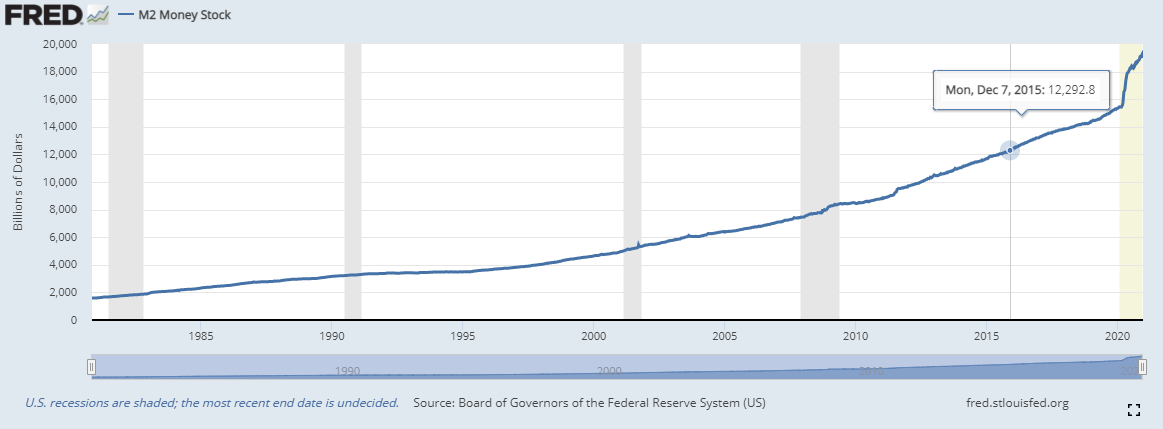
M2 Money Supply Growth
More and more people are beginning to recognize the massive problems this creates in society.
When looking at the M2 Money Supply chart created by The Saint Louis Federal Reserve you might remind yourself that in a world where M2 in growing by 25% the returns must equal M2 just to break even on purchasing power.
===
In trading, your performance is directly tied to your ability to be on the right side of the right trend at the right time.
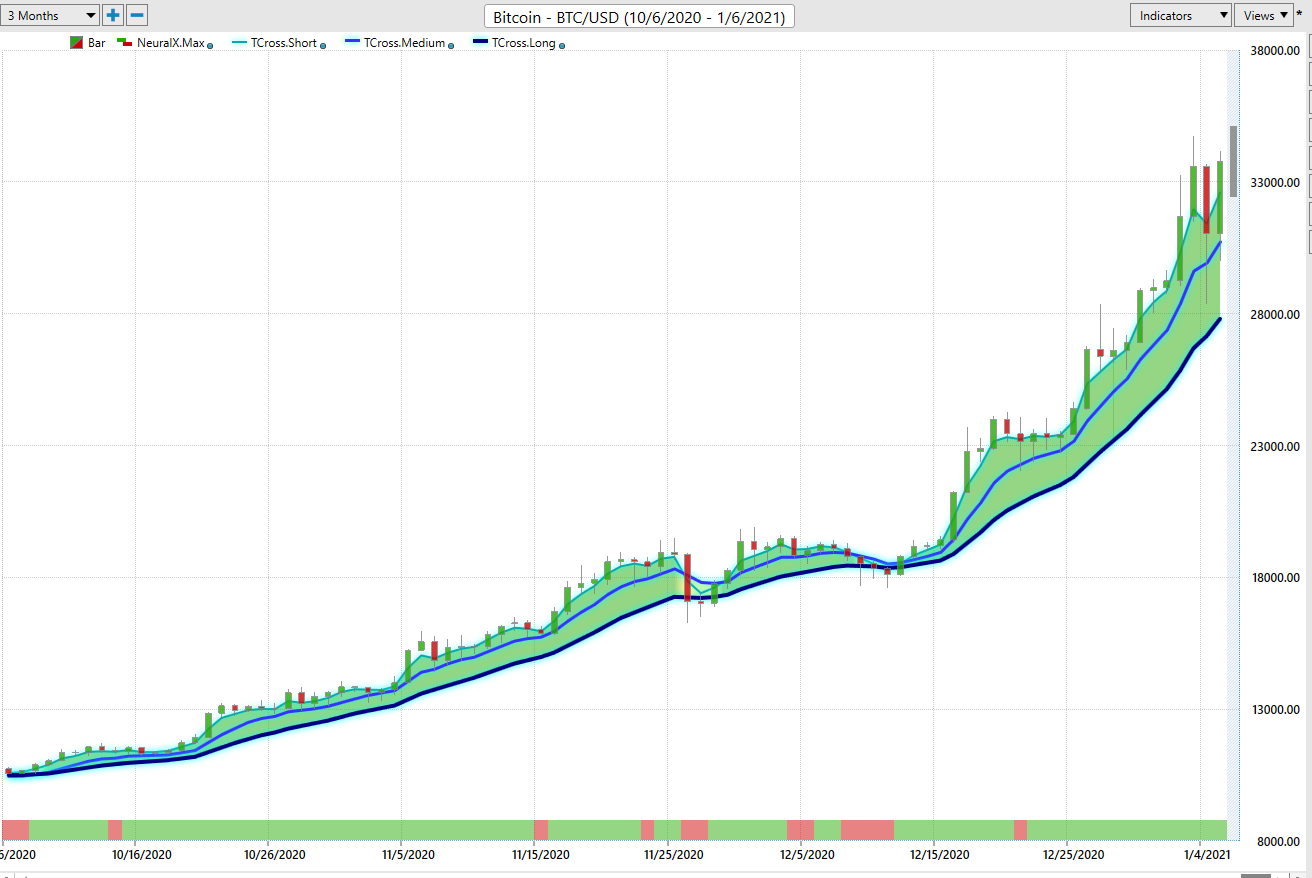
Vantagepoint Software Bitcoin Forecast With Predictive Artificial Intelligence
This is exactly the solution that artificial intelligence offers traders.
Keep in mind that a.i. has decimated humans at Poker, Chess, Go and Jeopardy. Why should trading be any different?
Intrigued? I invite you to attend one of our live training master class webinars where we show how artificial intelligence picks up on all these signals to create trading forecasts that are up to 87.4% accurate.
Join us.
Click here – Next Free Live Training.
It’s not magic. It’s machine learning.
Make it count.
IMPORTANT NOTICE!
THERE IS SUBSTANTIAL RISK OF LOSS ASSOCIATED WITH TRADING. ONLY RISK CAPITAL SHOULD BE USED TO TRADE. TRADING STOCKS, FUTURES, OPTIONS, FOREX, AND ETFs IS NOT SUITABLE FOR EVERYONE.
DISCLAIMER: STOCKS, FUTURES, OPTIONS, ETFs AND CURRENCY TRADING ALL HAVE LARGE POTENTIAL REWARDS, BUT THEY ALSO HAVE LARGE POTENTIAL RISK. YOU MUST BE AWARE OF THE RISKS AND BE WILLING TO ACCEPT THEM IN ORDER TO INVEST IN THESE MARKETS. DON’T TRADE WITH MONEY YOU CAN’T AFFORD TO LOSE. THIS ARTICLE AND WEBSITE IS NEITHER A SOLICITATION NOR AN OFFER TO BUY/SELL FUTURES, OPTIONS, STOCKS, OR CURRENCIES. NO REPRESENTATION IS BEING MADE THAT ANY ACCOUNT WILL OR IS LIKELY TO ACHIEVE PROFITS OR LOSSES SIMILAR TO THOSE DISCUSSED ON THIS ARTICLE OR WEBSITE. THE PAST PERFORMANCE OF ANY TRADING SYSTEM OR METHODOLOGY IS NOT NECESSARILY INDICATIVE OF FUTURE RESULTS. CFTC RULE 4.41 – HYPOTHETICAL OR SIMULATED PERFORMANCE RESULTS HAVE CERTAIN LIMITATIONS. UNLIKE AN ACTUAL PERFORMANCE RECORD, SIMULATED RESULTS DO NOT REPRESENT ACTUAL TRADING. ALSO, SINCE THE TRADES HAVE NOT BEEN EXECUTED, THE RESULTS MAY HAVE UNDER-OR-OVER COMPENSATED FOR THE IMPACT, IF ANY, OF CERTAIN MARKET FACTORS, SUCH AS LACK OF LIQUIDITY. SIMULATED TRADING PROGRAMS IN GENERAL ARE ALSO SUBJECT TO THE FACT THAT THEY ARE DESIGNED WITH THE BENEFIT OF HINDSIGHT. NO REPRESENTATION IS BEING MADE THAT ANY ACCOUNT WILL OR IS LIKELY TO ACHIEVE PROFIT OR LOSSES SIMILAR TO THOSE SHOWN.






